Chez Garin, Paris, 1965
The most famous restaurant in Paris in the mid-sixties was the only one to have kicked Michelin inspectors out whenever they showed up.
The chef and owner Georges Garin, a chain-smoking (Gauloises) bi-sexual peasant in a lobster-stained T-shirt who was in love with my great friend Richard Olney and not George’s wife, Mary, a chain-drinking American heiress. At dinner one night there was Mary, Richard, the head of the Guide Kléber and his young male companion, the companion’s opium-smoking even-younger companion, and Richard’s boyfriend, a six-foot Haitian exotic dancer from the Folies Bergère. With such a complex crowd the only appropriate choice of menu was perfect in its complex simplicity.
Ragoût de Truffes au Vin Rouge
Epaule de Mouton Grillé
Haricots Verts Fins au Beurre
Fromages
Riz à la Maltaise
The truffles were cooked with butter and garlic with a splash of Fine Champagne and Armagnac. The sauce was made from mirepoix sweated then doused in old red wine and finished with a paste made of the puréed truffle peelings and butter. The wines were from the then unknown great Domaine Tempier in Bandol, the ’61 red Cuvee Speciale, and then two Pauillacs: ’61 Haut-Batailly and Château Latour. With the simple rice dessert, a ’62 Filhot Sauternes.
The rice pudding dessert is basically that. The rice cooked and put into a mold, turned out, and sauce with orange sauce. Think your own Seville orange marmalade.
Here is what Escoffier says.
Riz à l'Impératrice
“Make a vanilla-flavored preparation of rice using the quantities of milk and sugar already prescribed. When the rice is cooked, and somewhat cold, add to it four oz. of a salpicon of candied fruit and four tablespoonfuls of apricot jam, perone-half lb. of raw rice. Then combine with it an equal quantity of Kirsch-flavored Bavarois preparation, or one pint of thick English custard and one pint of whipped cream.
Let a layer of red-currant jelly set upon the bottom of a Bavarois mold; then pour the above preparation into the latter and let the whole set, either in the cool or surrounded by ice.
When about to serve, turn out on a napkin.”
Riz à la Maltaise
“Prepare the rice with milk as above, but flavor it with orange rind, and omit the apricot jam and the candied fruit salpicon. Combine with it an equal quantity of orange Bavarois preparation.
Pour the whole into a dome-mold, and let it set on ice. When about to serve, turn out upon a round dish, and cover it with alternate rows of orange-sections, skinned.”
The first earthquake, not the 1989 on October 17th. One day and a year off. Were we tempting fate?
I believe that the main reason sweetbreads have gone out of culinary fashion is because of their now being cooked, as in grilled for example, from the raw state. Horrible. They need, as classically done, to be braised first for them to achieve their glory and flavor.
Braised Sweetbreads
4 large whole sweetbreads
2 cups fine mirepoix
2 bay leaves
2 sprigs fresh thyme
4 sprigs parsley
2 cups chicken, beef, or veal stock
½ cup dry white wine
Serves 4
Soak the sweetbreads in salty cold water for 2 hours, changing the water whenever it becomes bloody. Drain them and put them in a pot. Add cold water to cover them by 2 inches and bring to a boil. Drain, put them in a colander, cover with ice, and run cold water over them for 5 minutes.
Peel off most of the outer membrane, keeping sweetbreads as intact as possible.
Heat the oven to 375°F.
Put the mirepoix, bay leaves, and thyme and parsley sprigs in a casserole just large enough to hold the sweetbreads side by side. Cover and cook in the oven for 15 minutes. Put the sweetbreads on the mirepoix, pour the stock and wine over the sweetbreads, and season them lightly. Turn the oven down to 325°F and bake covered for 45 minutes. Remove the casserole from the oven.
Lift out the sweetbreads, brush off any mirepoix clinging to them, put them in a bowl, and strain the cooking liquid over them. Let cool in the liquid. Once cool they are ready for the finishing touch.
My menu for the Alice B. Toklas dinner at Chez Panisse in 1974. The dishes are from the Alice B. Toklas Cookbook.
Virgin Sauce
Butter (for one person 5 tablespoons) and a pinch of salt whisked in a bowl over hot water until the butter foams. As it does add drops of lemon juice and tepid water whisking all the time. When fully “amalgamated,” add whipped cream and serve at once.
“It is something apart.”
I had seen the word “panisse” in the Jacques Médecin cookbook La cuisine du comté de Nice and thought perfect for the restaurant’s birthday menu. Which I then wrote and sent it over to St. Hieronymous Press for printing into a poster.
Soon the day arrived for me to tell everyone what a “panisse” was and to order the ingredients. I rushed back to the book and found the recipe called for chickpea flour, so I assured everyone, “It’s just like a little pizza; don’t worry about it.”
That morning I made a panisse and tasted it. For some reason chick peas when turned into flour instead of menudo were quite disgusting. Inedible. I immediately made a huge batch of pizza dough with regular flour and hoped it would proof in time. It did, and the pizzas came out of the oven all day and night long, changing slightly every hour depending on what was left. They caused a sensation and later, a lot of press.
Pizza with Three Cheeses, Tomatoes, and Herbs
Serves 4
Many pizzas are more exotic or more esoteric than this one. But when the dough is really perfect, one should never lose track of its glory and the deep, simple satisfaction of biting into it and having its hot, yeasty flavors float up one’s nostrils, with the ingredients never overpowering the dough. This pizza is really the foundation for all good pizza, both simple and more architectural versions.
1 recipe pizza dough
½ cup coarse cornmeal
4 tablespoons olive oil
4 ripe tomatoes, peeled, sliced
12 leaves fresh basil
1 ½ teaspoons fresh marjoram leaves, chopped
1 ½ teaspoons fresh thyme leaves, chopped
4 ounces Fontina cheese, thinly sliced
4 ounces Parmesan cheese, grated
4 ounces fresh mozzarella cheese, thinly sliced
Salt, freshly ground pepper
Heat the oven to 500°F. Put a sheet pan or pizza stone in the oven to get it very hot.
Divide the dough into 4 pieces. Roll each piece into a 6-inch circle. Stretch each circle another 2 inches in diameter by turning and pulling it round and round in your hands. The edge should be slightly thicker than the middle.
Sprinkle the heated pan or stone with cornmeal before putting on the circles of dough. Bake for 3 minutes.
When you take them out of the oven, brush each circle with 1 tablespoon oil. Place the tomato slices on the dough and season with salt, pepper, and the herbs. Layer first the Fontina, then the Parmesan, then the mozzarella, on the dough.
Bake until the cheese is melted and the dough is cooked, about 5 minutes.
When our young fresh from California’s Santa Fe Bar & Grill licked the French in Newport, Rhode Island. And the 100 food journalists guests the next day coined the term “California Cuisine.”
Warm Tropical Fruit Compote with Coconut Ice Cream
This dish is one of my favorite modernizations of timeless classic fruit compotes, and one that you can cook in 10 minutes. Almost any combination of fruits slightly warmed in sugar and served with ice cream is an inevitable crowd pleaser, but the tropical fruits seem to get the blue ribbon.
Whichever fruit you choose, select whatever is ripe and at the top of their season. Figs, white and yellow peaches, plums, white “mango” and “honeydew” nectarines, pink and green gooseberries, cherries and so on. The flavors of wild California, Provence and North Africa are captured with figs mixed with orange or rose-flower water and Green Chartreuse if they are fresh, and poached in Muscat wine if dried. In 1983 at the Joseph Phelps Vineyards in Napa Valley, we poached fresh apricots in sweet Riesling from the vineyard, and served them to great effect with a hazelnut sabayon.
Any of these warm compotes can be served as shortcakes, on top of toasted polenta pound cake, and even on hot, buttered, crumpets.
Serves 6
2 ripe mangoes
1 ripe Hawaiian papaya
4 ripe guavas
4 ripe passion fruit
1 cup medium sugar syrup
1 tablespoon unsalted butter
1 tablespoon fresh lime juice
Pinch salt
1 quart best quality coconut ice cream
Peel the mango and slice in pieces lengthwise. Peel the papaya, cut in half lengthwise, scoop out the seeds, and slice it crosswise. Cut the stem end off the guava, then cut them in half or quarters, depending on the size. Cut the passion fruit in half and spoon the pulp and seeds into a small bowl.
Simmer the sugar syrup in a sauté pan and add the mango, papaya, and guava. Toss the fruit in the syrup, turn up the heat, add the passion fruit, butter, lime juice and a pinch of salt, and continue to cook, swirling the fruit and butter around in the pan, another minute only, or until the butter is incorporated into the sauce.
Toss together over the heat for only 1 minute or until the butter is incorporated into the sauce. Serve immediately in four open soup plates and put a large scoop of the ice cream in the center. Spoon some sauce over.
Remember that if you include raspberries, add them only for the last 30 seconds of heating so that they don’t fall apart.
Pecan Puff Pastry with Chocolate Sauce and Sabayon
I invented this dish for a 1982 dinner at San Francisco’s Clift Hotel done by a group of chefs. It was such a success that I used it again at the now legendary inaugural dinner, at the Stanford Court, of the American Institute of Wine and Food, the dinner being prepared by chefs from all over the United States. It is a superb combination of flavors and is very easy once you master puff pastry, a discipline that I have always thought was best left to other people.
This menu is for the dinner after which the press called it the birth of “New American” cuisine. It’s first appearance so named.
Serves 4
4 rectangles puff pastry 4 by 2 by ¼ inches
1 cup pecan pieces
½ cup light sugar syrup
Pinch of salt
5 tablespoons Dutch-process cocoa
¾ cup water
½ cup sugar
3 tablespoons butter
1 tablespoon whipping cream
1 ½ cups sabayon mousseline sauce
Heat the oven to 350°F.
Put the cold puff pastry pieces on a wet baking sheet and bake for 20 minutes. Let cool. Slice the pieces horizontally in half. Scoop any uncooked pastry from the centers. Put the pieces on a tray and reserve.
Toast the pecans on a tray in the oven for 10 minutes. Let cool. Then put them in a food processor and grind them. Add the syrup and salt and puree until smooth.
To make the chocolate sauce, mix 4 tablespoons cocoa with just enough of the water to make a smooth paste. Bring the sugar and remaining water to a boil and stir in the cocoa. Whisk until smooth and return to the saucepan. Simmer for 15 minutes, stirring in constantly. Let cool a bit. When the mixture is still warm, stir in the butter and then the cream. Keep warm.
Warm the pecan puree in a double boiler. Fill each bottom piece of pastry, put the top on. Put on a plate, the sauce around, the sabayon on op of the pastry, and a sprinkled of cocoa on top of the sabayon.
Cepes/Porcini Butter
An easy compound butter which a lot of impact. Either grind up dried cepes to a powder and process with butter or, easier is to puree cepes soaked in water or stock until tender, and then mix with the butter
Stars Negroni
1 ounce Bombay Sapphire gin
1 ounce Campari
1 ounce Punt e Mes
Dash Vodka Stolichnaya Ohranj
Add all to a mixing glass filled with ice and stir until well-chilled.
Serve ‘up’ or strain into a rocks glass over a large ice cube.
And, finally, a menu not for the home, but for going out to a restaurant. In this case, my birthday at London’s The Ledbury.
Valentine Carpaccio
The Philippines Valentine’s day is a mixed blessing. Involving the difficulty of finding the right day for taking out one’s wife when one’s number one mistress and at least one lesser expect the day to be theirs as well.
Definitely a day for someone to see red.
I prefer Chinese New Year when everyone gets little red envelopes stuffed with cash. In the bar of Manila’s Peninsula hotel my friends were discussing how to make a red menu for that night. They looked to me and I sounded off.
“There are Page Mandarins (shipped in little red envelopes, I presume) that are a confluence between Minneola tangelos and Clementine mandarins and certainly preferable to Purple Peruvian or Red Thumb potatoes. Magenta watermelon radishes by themselves are a bit spicy, even when sliced paper thin and treated like carpaccio, which reminds me that perhaps the first course would be just that – using very red grass-fed beef with red sweet onions. But onions and garlic are not usually part of romance except at an impassioned grande bouffe, so we’ll stick with blood oranges or bergamots. Red roses infused into their juice would take care of the necessary and ubiquitous rose problem and perhaps even start a trend.”
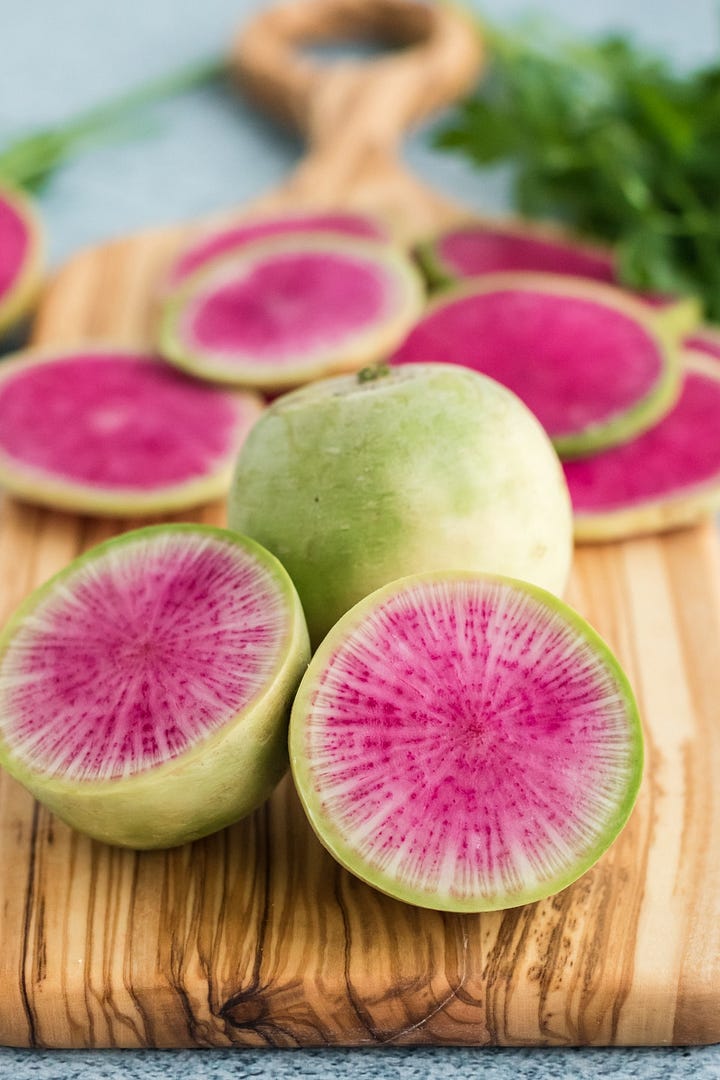
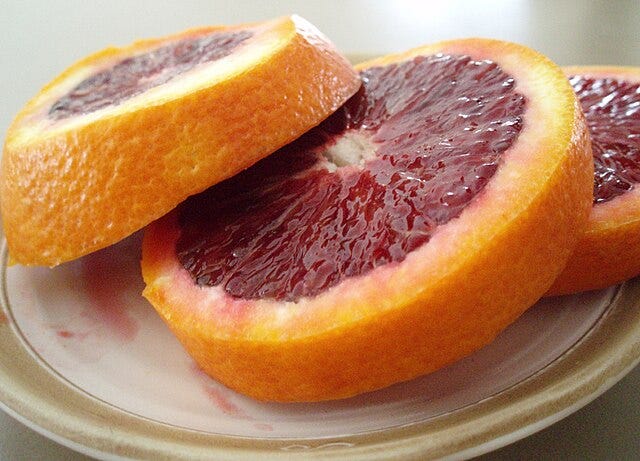
“After the first course the red theme could involve beets when organic, heirloom, and small, roasted, and served with cold-pressed organic canola oil. An aphrodisiac even, even when who knows what they will stain? Salmon always works, since its oils open up the tubes. Then there are maroon carrots, and if those are too cooling of the blood, then red Kuri squash (also a bit cold) and endigia endive. A confluence of Treviso radicchio and Chioggia chicory. It would be very good if dressed in the rose-petal-bergamot juice.”

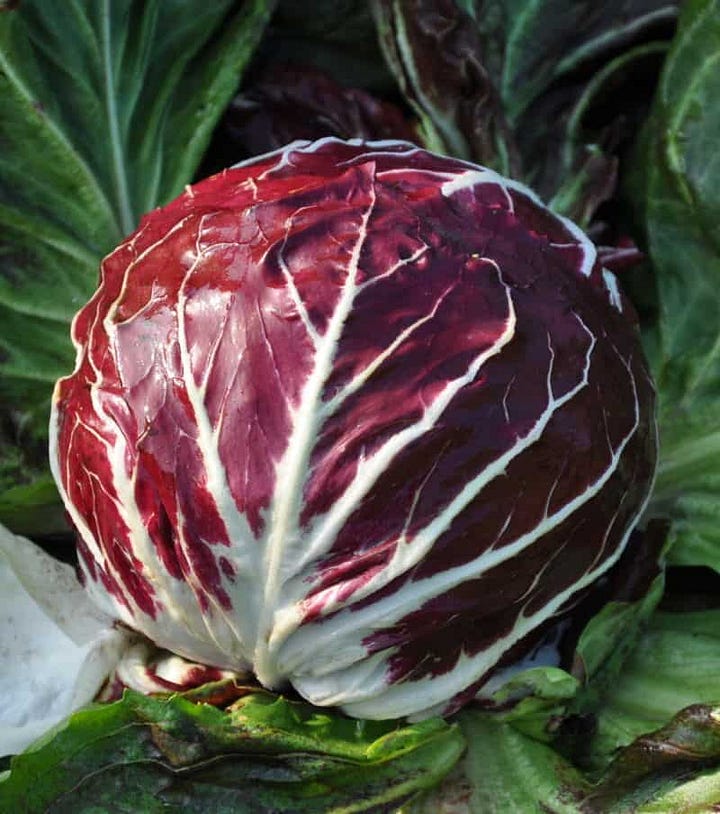
For dessert I suggested renting a big screen and show the movie Woman on Top. That way, if all else fails, one could have a dessert of red chilies, because we know they work – at least in the film. Or chilies stuffed into pomegranates so that each person would have to slice and suck out the juices. Or rhubarb, which I adore.
“Of course, if by dessert you are still at the table, none of the above is working.”
A friend whispered, “Order some champagne.” We chilled a magnum of a pink and got down to what I saw as the real business of Valentine’s since I did not fancy anyone in the foyer and looking elsewhere through their ubiquitous bodyguards was too much work.
Our menu:
Negronis straight up in frozen glasses (no orange peel)
Chilled oysters, red Ancho-chili granita
Carpaccio of grass-fed beef with a julienne salad of magenta watermelon radishes dressed in sesame-jasmine-canola oil
Gosset champagne rose
Poached warm wild Atlantic salmon with a red rose-petal Hollandaise.
Regaleali Sicilian rose
Red Endigia Salad with black truffles and hazelnut oil
Stewed rhubarb with pomegranate sabayon, minced red chilies, and “Woman on Top.”
Dom Perignon rose en magnum
Thank you for reading Out of the Oven. If you upgrade for the whole experience, and pay $5 a month or $50 a year, you will receive at least weekly publications, as well as menus, recipes, videos of me cooking, and full access to archives.

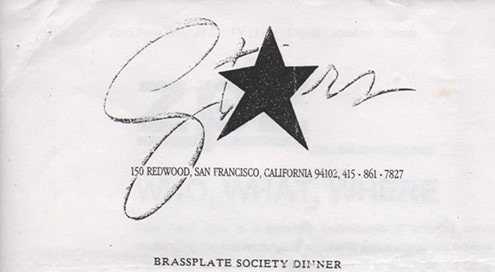


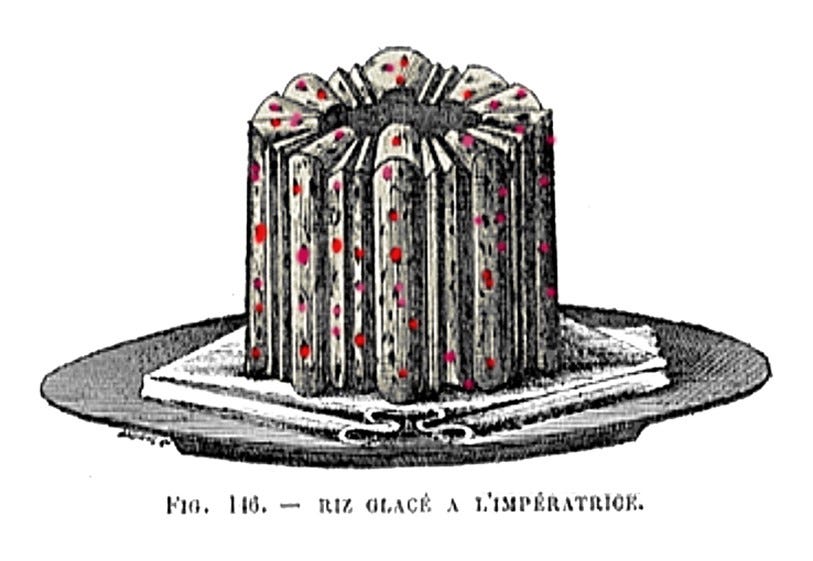

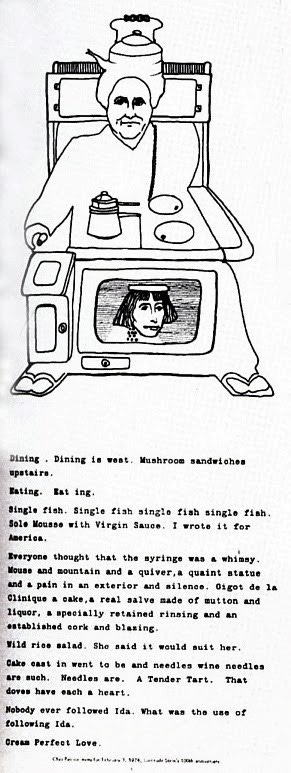

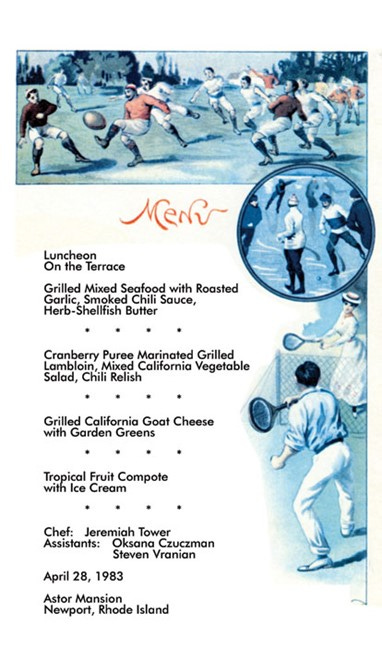
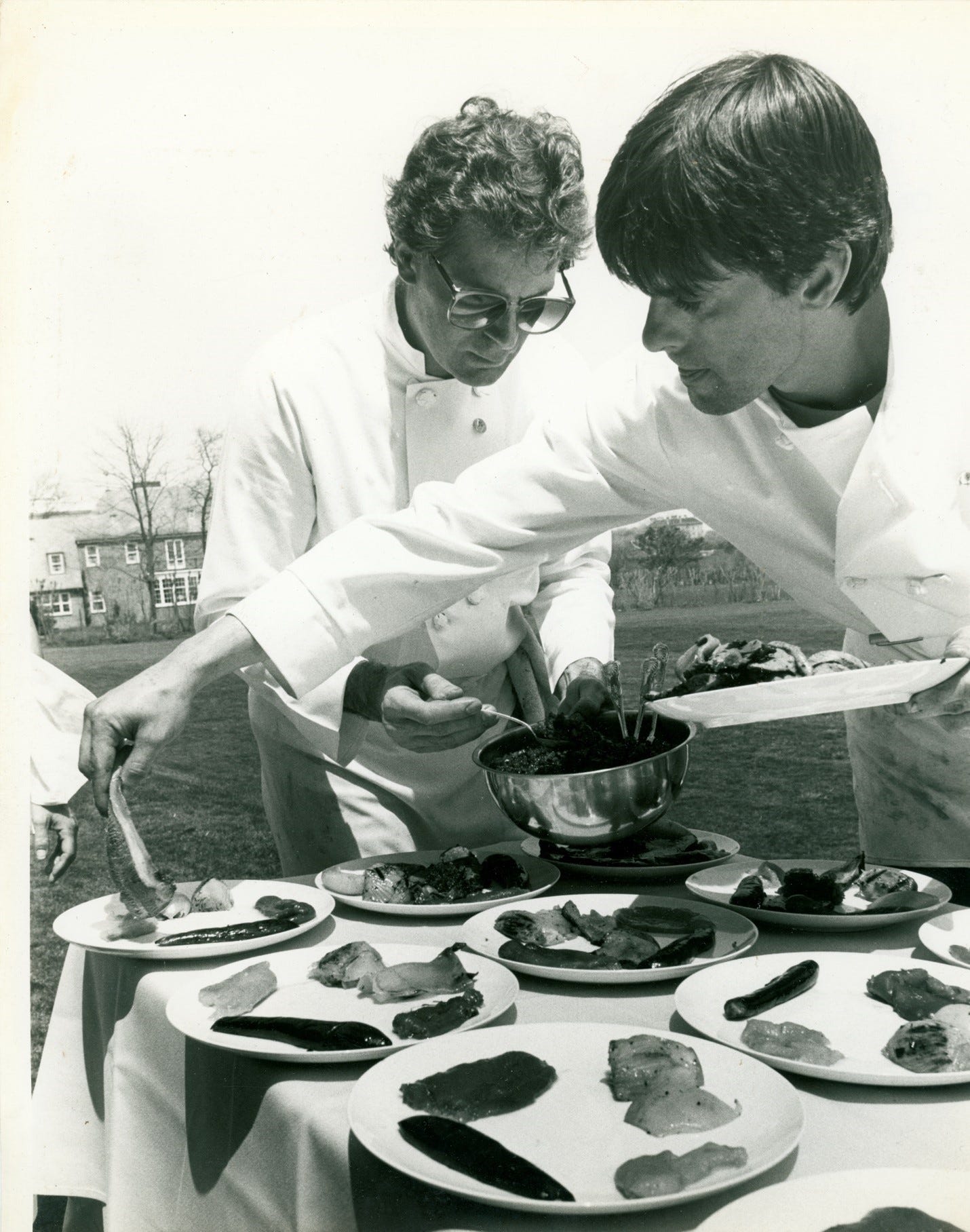
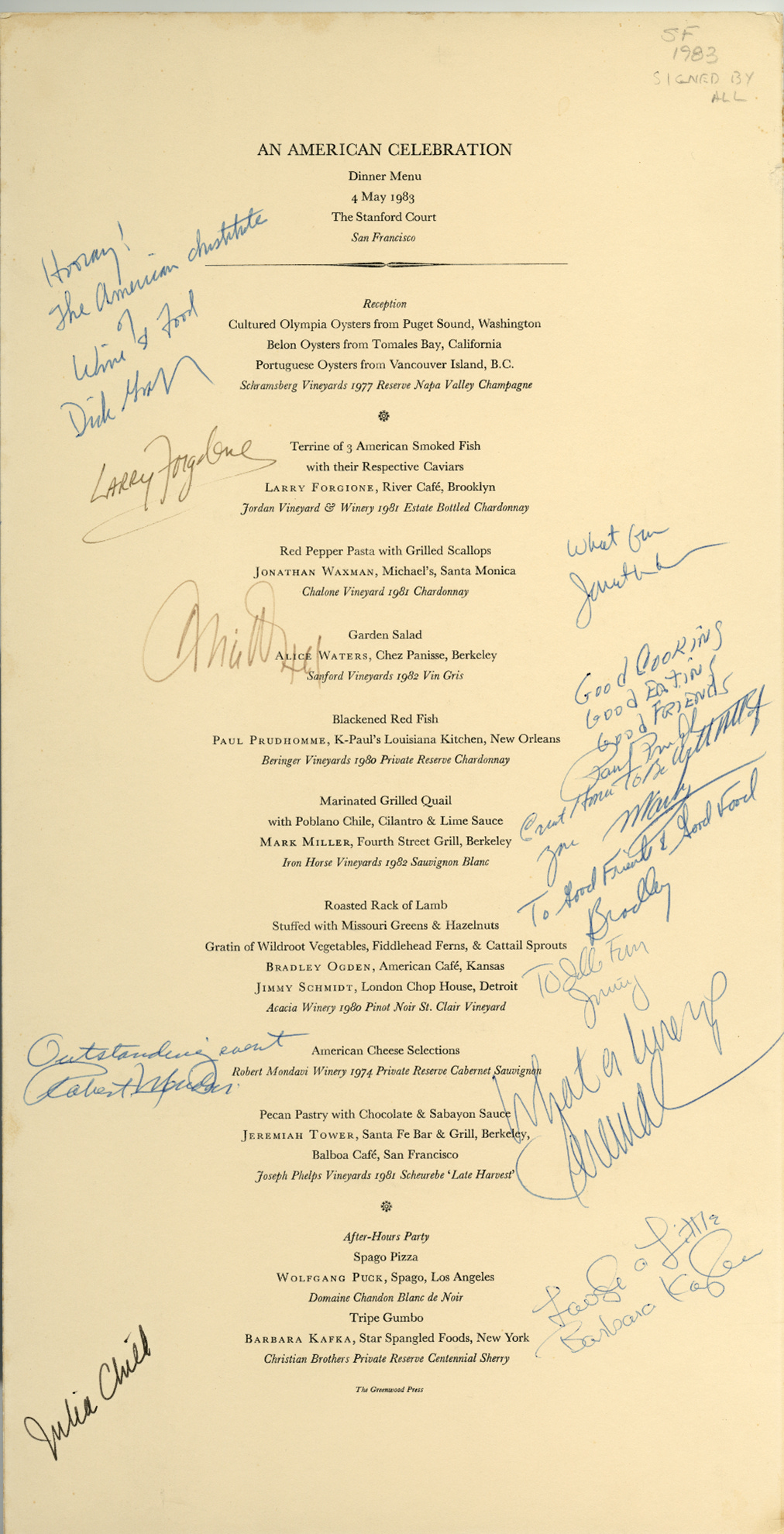
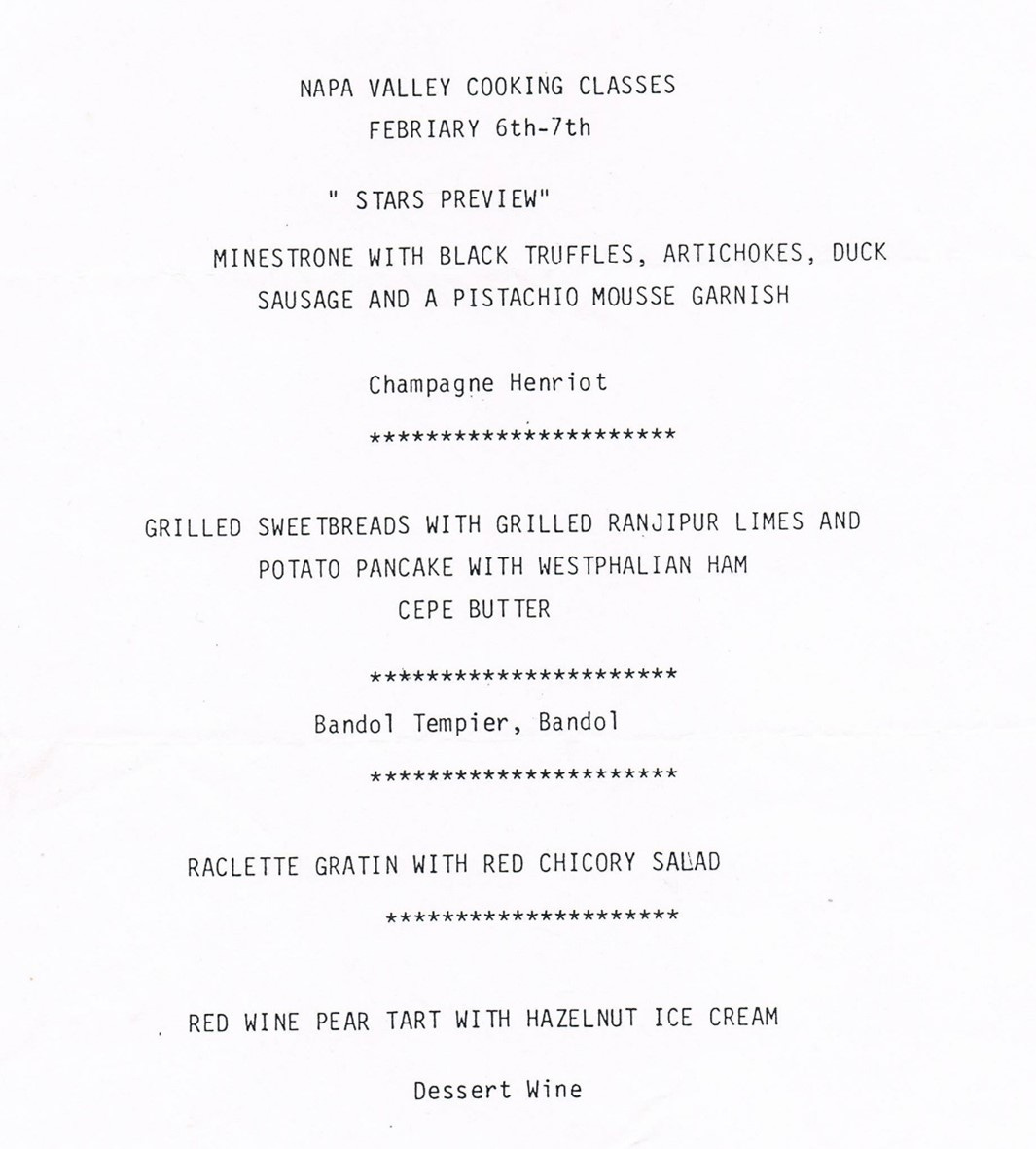
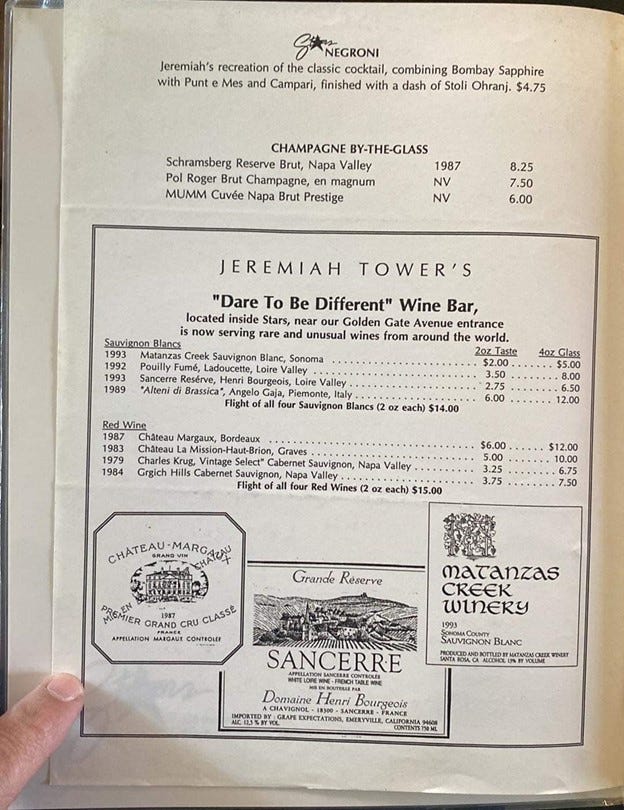

The Stanford Court menu, wines and chef line-up is absolutely incredible. Wondering what the per person cost was to attend?! You couldn’t afford to put something on like that today.
J - I have fond memories of being a very poor CCA culinary student sharing a one-bedroom apartment with my best friend up the street from Stars. We used to sit at the bar and nurse one cocktail each all night just to be there and wait for you to come out of the kitchen. Ah…the 80’s in San Francisco. Magical times. Thank you..
Darling I NEED to hear this story while lying down sipping absinth and NOT actually smoking opium- what an absolutely fun time to be alive!! Kids today have no idea what they are missing out on 😁🎉🙌🏻